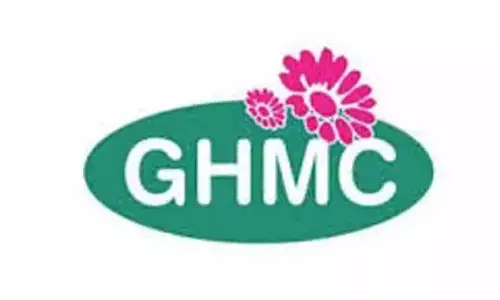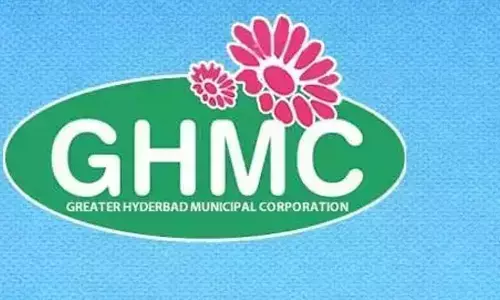The 16th general elections to Indian parliament process has begun in a big way; On 16 May, it would be clear who is going to rule the country for the next five years. Formally speaking, periodic elections are considered as a hallmark of a working parliamentary democracy. However, substantially speaking Indian democracy is heavily dependent on traditional social structures for its actual functioning. In that sense, communalism emerges as a hegemonic political vehicle with the emergence of ‘hindutva’ ideology and its political avatar Bharatiya Janata Party as a major political force in the country.
At times, ideology as well as rhetoric that are created around a person is also an important source in advancement of a political party’s winning prospects. In this election, two issues might help BJP to galvanise its winning prospects - one, projections of BJP’s Prime Ministerial candidate Narendra Modi as ‘development purush’ around his often-stated ‘vibrant Gujarat model rhetoric’, the corporate media image building of Modi happened often-stated Gujarat model of development. Second, the core ‘hindutva’ agenda of BJP. It is clear that, the hindutva part of its election manifesto became amply clear when the party announced it recently, with its adherence to construction of Ram mandir at Ayodhya, abrogation of article 371 which confers special status to Jammu & Kashmir and implementation of common civil code. The hindutva propaganda is running at sub-tarenian level.

In Andhrapradesh, pre-poll alliance between BJP and Telugu Desham Party and actor Pawan Kalyan’s unconditional support to Modi are some important political developments. It seems actor Pawan Kalyan is impressed with Modi’s pravachan styled speeches and Gujarat model of development that’s why he is preferring to side with BJP, even though Modi has been accused for overlooking the communal pogrom in 2002 as the chief minister of Gujarat. However, what has been working in favour of Modi is his ‘much-hyped’ Gujarat model of development, which has attracted middle-class as well as masses alike.
However, nobody seems to be bothered about verifying the reality of his much-hyped vibrant Gujarat model of development. It seems that some media agencies are deliberately creating an image of development purush in Modi. However, what they define development is nothing but a taken for granted ‘growth’. In this definition, it seems development of big business houses at the cost of marginalised section under neo-liberalism is development. It is a very well known fact that American Lobbying Company is marketing aggressively brand Modi and he is emerging the new darling of powerful business houses. It seems upper-middle class, which has developed intrinsic links with globalisation process, and growth is rallying behind Modi. During Modi’s regime in Gujarat, it has all come together as never before in a self fulfilling prophecy of an effective, pro-corporate, investor-friendly governance build on consolidating a ‘political culture of authoritarianism’, a ‘brash pride to demonstrate, brute force’, and a belief in ‘worshipping inequalities’.
The issue here is that development and growth in Gross Domestic Product (GDP) should not be equated. What has Modi been projecting as development is nothing more than growth in GDP. Nevertheless, Gujarat’s growth is in line with other progressive states like Maharashtra, Tamil Nadu and Delhi. Gujarat’s growth has been achieved at the cost of handing over complete control over the economy to corporate, and wholesale privatisation: ‘Key sectors – traditionally held to be the preserve of the state – such as ports, roads, rail and power have been handed over to corporate capital. The Modi administration’s largesse to corporate can be judged by two examples. One is the staggering subsidies offered to Tata for its Nano plant and other projects. Against an investment of Rs 2,900 crores, Tata received a loan of Rs 9,570 crores at 0.1% interest, to be paid back on a monthly basis after 20 years, in addition to land at much below market rates, with stamp duty, registration charges and electricity paid for by the state. Tax breaks mean that the people of Gujarat will not be getting any of this money back in the near future. All the rules were bent to provide Adani with a power supply contract costing the state of Gujarat an excess Rs 23,625 crores over 25 years, and other companies, including Reliance Industries and Essar Steel, were extended similar favours.
The SEZ Act allows the owners of large SEZs (above 1,000 hectares) to use 75 per cent of their superficy for non-industrial purposes (for the smaller ones, up to 50 per cent of an SEZ can be devoted to non-processing areas). SEZ owners have been quick to indulge in real estate speculation and to lease at market price land that they've bought at throwaway prices. Interestingly, the corporate sector is not covered by the RTI. We wonder why. Contrary to the myth that Gujarat is a powerhouse attracting large FDI inflows, in 2012-13 its share in FDI was a meagre 2.38%, ranked 6th, compared to Maharashtra’s 39.4%.
The Comptroller and Auditor General (CAG) has said that government-owned firms in Gujarat granted “undue benefit” to big industrial houses, which resulted in revenue losses worth crores of rupees to the state exchequer. The CAG detailed undue favours to Reliance Industries Ltd (RIL), Essar Steel and Adani Power Ltd (APL). It also highlighted that the state government has tweaked rules to grant land to Ford India Pvt Ltd as well as Larson and Toubro Ltd. Any objective definition of ‘corruption’ would include such activities. The scale of corruption in Gujarat is stupendous, and those who campaign against it have not fared well. With only 5% of India’s population, 22% of the murders and 20% of the assaults of RTI activists in recent years have occurred in Gujarat, which has only two RTI Commissioners compared to eight in Maharashtra and nine in Tamil Nadu. The post of Lokayukta (corruption watchdog) had not been filled for ten years since 2003.
Indebtedness and Development in Gujarat
The Gujarat pattern of development has often been arraigned from the left because of its social deficits. Indeed, the state's social indicators do not match its economic performance. With 23 per cent of its citizens living below the poverty line in 2010, Gujarat does better than the Indian average — 29.8 per cent — but it reduced this proportion by less than 10 percentage points in five years. This poverty reduction rate has something to do with the wages of casual workers. According to the 68th round (2011-12) of the National Sample Survey Organisation (NSSO), Gujarat has among the lowest average daily wages for casual labour (other than in public works) in urban areas: Rs 144.52, when the national urban average is Rs 170.10. This kind of poverty goes with malnourishment. One of the social indicators where Gujarat shows the most dramatic lag is the hunger index — only about 43 per cent of children under ICDS in the state are the normal weight, according to an Indian Institute of Public Administration report. Gujarat has not spent as much as other states on the social sector. In a report, the Reserve Bank of India showed that Gujarat spends less than several other states in this area. Take education — in 2010-11, Gujarat spent 15.9 per cent of its budget in education, when Bihar, Chhattisgarh, Haryana, Kerala, Maharashtra, Orissa, Rajasthan, Uttar Pradesh and West Bengal spent between 16 and 20.8 per cent. The national average was 16.6 per cent.

The Gujarat growth pattern relies on indebtedness. The state's debt increased from Rs 45,301 crore in 2002 to Rs. 1,38,978 crore in 2013, not far behind the usual suspects, Uttar Pradesh (Rs 1,58,400 crore) and West Bengal (Rs 1,92,100). In terms of per capita indebtedness, the situation is even more worrying, given the size of the state: each Gujarati carries a debt of Rs 23,163 if the population is taken to be 60 million. In 2013-14, the government plans to raise fresh loans to the tune of Rs 26,009 crore. Of this amount, Rs 19,877 crore, that is 76 per cent, will be used to pay the principal and the interests of the existing debts. Gujarat would fall into the debt trap the day this figure reaches 100 per cent.
Gujarat’s Marginalised Voices
The ordinary people of Gujarat have paid a heavy price for its economic growth. Gujarat has one of the highest poverty levels of all the Indian states. Huge swathes of land allocated to corporates have displaced lakhs of farmers, fishermen, pastoralists, agricultural workers, Dalits and Adivasis. During Modi’s tenure, 16,000 workers, farmers and farm labourers committed suicide due to economic distress by 2011. The ‘rich’ government of a ‘vibrant’ state cannot save lives of its own people who kill themselves because they are unable to survive. Among the rural groups that suffered from the state's policy, Adivasis are a case in point.

According to a World Bank report, between 1993-94 and 2004-05, the share of those who lived below the poverty line increased from 30.9 per cent to 33.1 per cent — 10 percentage points below the national average. The Modi government has been criticised for not allocating to Adivasis and Dalits funds in proportion to their population. Recently Rathwa adivasi community has been excluded from the Scheduled Tribes list by the Gujarat government so to exclude mineral rich adivasi area from fifth schedule of the constitution, so that mining companies can freely extract minerals displacing adivasis. While the adivasis represent almost 18 per cent of the state population, they were allocated 11.01 per cent of the total outlay in 2007-08, 14.06 per cent in 2008-09, 13.14 per cent in 2010-11 and 16.48 per cent in 2011-12. Moreover, actual expenditures were even lower. The same was true of the Dalits, who represent 7.1 per cent of the state population and who were allotted 1.41 per cent of the total outlay in 2007-08, 3.93 per cent in 2008-09, 4.51 per cent in 2009-10, 3.65 per cent in 2010-11 and 3.20 per cent in 2011-12. Untouchability against Dalits is very rampant in the state. And the Independent Muslims’ voice has been completely silenced in the ‘public sphere’
Wage Rates in Gujarat

Narendra Modi’s remark in an interview to Wall Street Journal that high malnutrition persists in his State because Gujaratis are mostly vegetarian (implying vegetarianism causes malnourishment) and are middle class, and more conscious about their looks and putting on weight than their health, created a furore and such a comment was shameful. This type of comment masks the reality of hunger that exists in the state. What explains Gujarat’s paradox of hunger amid the seeming plenty. In spite of the high growth rate, wages in the State are repressed with the result that most workers do not have the purchasing power to buy adequate nutritious food. The wage rates of casual and regular workers of both men and women workers in rural and urban areas are very low compared to other States. As per the latest National Sample Survey Office statistics, the daily wage rates of casual men and women workers in rural areas are lower than the corresponding rates in India, with the State ranking 14th (Rs.69) and ninth (Rs.56) in men’s and women’s wage rates respectively among the major 20 States. In the case of urban casual workers’ daily wages, the State ranked seventh (Rs.109) and 14th (Rs.56) for male and female wage rates. In the case of regular rural workers also the State ranked 17th (Rs.152) and ninth (Rs.108) in the male and female wage rates respectively. The corresponding ranks for urban areas are 18th (Rs.205) and 13th (Rs.182) respectively among the major 20 States in India.
Water and Sanitation in Gujarat
Finally, the recent data of the 2011 Census of Population has shown that Gujarat lags behind many States in providing potable water and safe sanitation, which are critical in transforming food intake into nutrition. The Census shows that about 43 per cent of rural households get water supply at their premises and only 16.7 per cent households, treated tap water. About one fifth of the rural households, mainly women, walk long distances to collect water — impacting adversely on their health. In the case of urban areas, the situation is slightly better: 84 per cent households get water at their premises and 69 per cent, treated water. As regards sanitation, Gujarat has a long way to go. According to the 2011 Census, 67 per cent of rural households do not have an access to toilets and more than 65 per cent households defecate in the open, polluting the environment. The State ranks 10th in the use of latrines. In short, the growth process in the State has paid limited attention to the well-being of the masses. It is not surprising therefore, that National Family Health Survey 3 has shown that Gujarat not only ranks low in nutrition of women and children but has also performed very poorly in the recent decade.
.jpg)
However, the ‘market led’ path to development has been renewed in the last decade in Gujarat with a zeal stamped all over by Narendra Modi’s authoritarian style of governance itself. In crucial ways, it represents a fundamental shift away from Gujarat’s own history of humanism, liberal welfare programmes and democratic social engineering.
The opinions expressed in this article are those of the author and do not necessarily reflect the views of our organisation.





.jpg)












